Ultrasound of the eye and orbit is an examination with a wide application in ophthalmology. It is used e.g. in the diagnosis of retinal detachment, haemorrhages and other lesions in the vitreous humour, intraocular tumours, and in the assessment of posterior eye segment, especially if there is no insight, e.g. with mature cataract and corneal opacities. It is also used for biometry, if it is not possible to apply optical method. Ultrasound machines for eye examination use the effect of sound waves, which are reflected from tissue structures of the eye and orbit. The higher frequency of the wave used, the smaller depth of the examination and higher image resolution.
Ultrasound of the eye and orbit is a non-invasive examination, painless for the patient. The doctor places the machine transducer on the closed eyelid, on which a special gel had been applied.
FAQ
During a basic ophthalmological visit, the patient’s ophthalmological history is taken, and the following examinations are conducted: autorefraction, keratometry, intraocular pressure measurement, visual acuity examination, slit lamp examination and fundoscopic examination.
An ophthalmological visit with performance of basic examinations lasts about 20 minutes. In some Centres, the examinations being part of the visit are performed by auxiliary personnel in the examination room. These activities are also included in the time of the basic visit.
Yes, it is recommended that contact lenses be removed before the visit. The patient should bring the lenses to the visit, since the doctor may ask the patient to insert them.
The cost of a visit is as per the price list on our website.
Yes, but you should inform the doctor that you would like to select glasses or lenses at the beginning of the visit.
Yes, you should normally apply your eye drops.
An ophthalmological visit does not require special preparation. If this is your first visit at the centre, you should have the identity card, which is necessary to create a patient record. Also remember that in most cases it is not allowed to drive a car after an ophthalmological visit.
During the first visit, the doctor takes the patient’s ophthalmological history. If the patient has any ophthalmological documentation from other institutions, it is worth taking it to the visit.
You can return to work/school after the ophthalmological visit, but please remember that if you received eye drops at the visit, your vision may be disturbed and blurred for about 2-3 hours.
Ophthalmological check-ups is an individual matter. The doctor usually informs the patient during the visit when he/she should return. Patients over 50 should have a check-up at least once a year.
If you received pupil-dilating drops at the visit, you must NOT drive a car directly after the visit. You should wait for about 2-3 hours.

